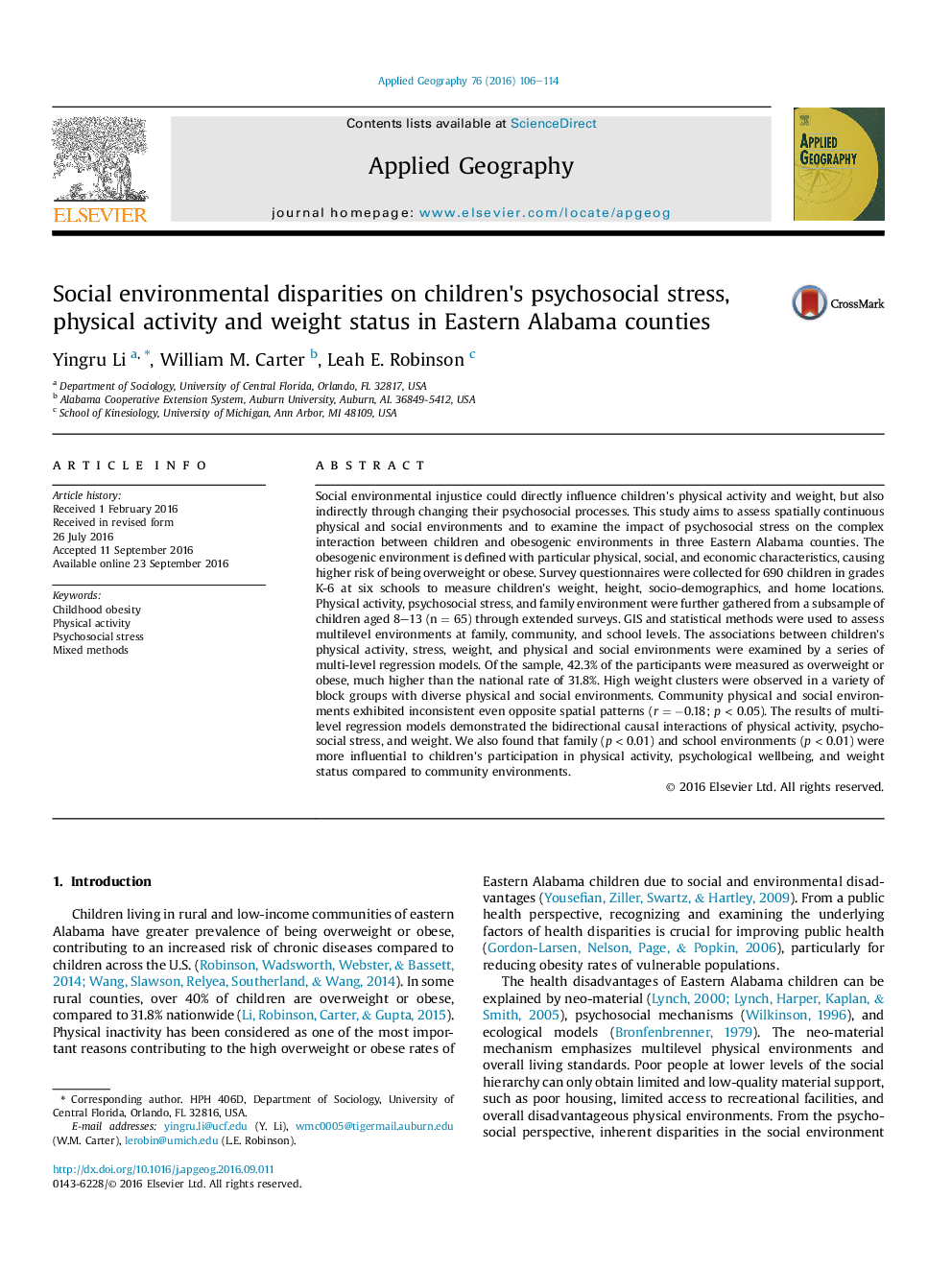| کد مقاله | کد نشریه | سال انتشار | مقاله انگلیسی | نسخه تمام متن |
|---|---|---|---|---|
| 6458539 | 1421041 | 2016 | 9 صفحه PDF | دانلود رایگان |
- Community physical and social environments exhibit inconsistent spatial patterns in Eastern Alabama counties.
- Family and school environments have significant impacts on children's physical activity, psychosocial stress, and weight.
- Psychosocial stress influences the interactions between multilevel environments and children's physical activity and weight.
Social environmental injustice could directly influence children's physical activity and weight, but also indirectly through changing their psychosocial processes. This study aims to assess spatially continuous physical and social environments and to examine the impact of psychosocial stress on the complex interaction between children and obesogenic environments in three Eastern Alabama counties. The obesogenic environment is defined with particular physical, social, and economic characteristics, causing higher risk of being overweight or obese. Survey questionnaires were collected for 690 children in grades K-6 at six schools to measure children's weight, height, socio-demographics, and home locations. Physical activity, psychosocial stress, and family environment were further gathered from a subsample of children aged 8-13 (n = 65) through extended surveys. GIS and statistical methods were used to assess multilevel environments at family, community, and school levels. The associations between children's physical activity, stress, weight, and physical and social environments were examined by a series of multi-level regression models. Of the sample, 42.3% of the participants were measured as overweight or obese, much higher than the national rate of 31.8%. High weight clusters were observed in a variety of block groups with diverse physical and social environments. Community physical and social environments exhibited inconsistent even opposite spatial patterns (r = â0.18; p < 0.05). The results of multi-level regression models demonstrated the bidirectional causal interactions of physical activity, psychosocial stress, and weight. We also found that family (p < 0.01) and school environments (p < 0.01) were more influential to children's participation in physical activity, psychological wellbeing, and weight status compared to community environments.
Journal: Applied Geography - Volume 76, November 2016, Pages 106-114
